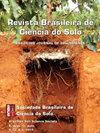Digital soil mapping for the Parnaíba River delta, Brazilian semiarid region
IF 2
4区 农林科学
Q3 SOIL SCIENCE
引用次数: 0
Abstract
: Soil mapping is a permanent demand, but the traditional method does not allow fast execution and low cost. Digital soil mapping (DSM) aims to improve the process by working with models that treat soil spatial variability quantitatively. In this perspective, the objective of the study is to perform DSM of the Parnaíba River Delta, Northeastern Brazil, through the decision tree (DT) integration technique using a set of attributes derived from the digital elevation model (DEM) and satellite images as input parameters. Data matrices were created considering different soil groups. The performance of the J48 machine learning algorithm (DT) was assessed for a set of two data matrices: one elaborated for the mapping units of the pre-existing conventional pedological map and the other for a set of associations determined based on the characteristics of the landscape of the study area with close correlation with the existing soils, mainly due to the source material. From the data processing, digital soil maps were created and validated by means of error matrices, whose reference points were classified in the field and validated using a pre-existing traditional soil map of the area. The results revealed that the attributes derived from satellite images stood out from those derived from DEM in predicting soil groups. Based on the validation coefficients applied (overall accuracy, Kappa index, user’s accuracy and producer’s accuracy), the classification quality was satisfactory, despite the complexity of the environment.巴西半干旱区Parnaíba河三角洲数字土壤制图
本文章由计算机程序翻译,如有差异,请以英文原文为准。
求助全文
约1分钟内获得全文
求助全文
来源期刊

Revista Brasileira De Ciencia Do Solo
农林科学-土壤科学
CiteScore
3.00
自引率
11.80%
发文量
32
审稿时长
9-24 weeks
期刊介绍:
The Revista Brasileira de Ciência do Solo is a scientific journal published by the Brazilian Society for Soil Science (SBCS), founded in 1947, and is responsible for the propagation of original and inedited technical-scientific work of interest for Soil Science.
Contributions must not have been previously published or submit to other periodicals, with the only exception of articles presented in summarized form at professional meetings. Literature reviews are accepted when solicited by the Editorial Board.
 求助内容:
求助内容: 应助结果提醒方式:
应助结果提醒方式:


